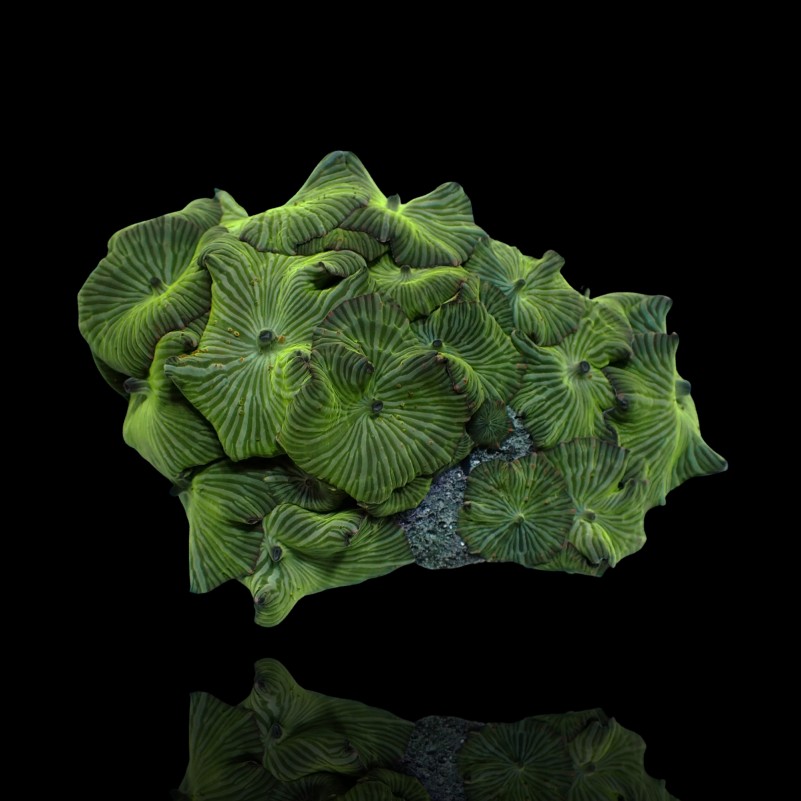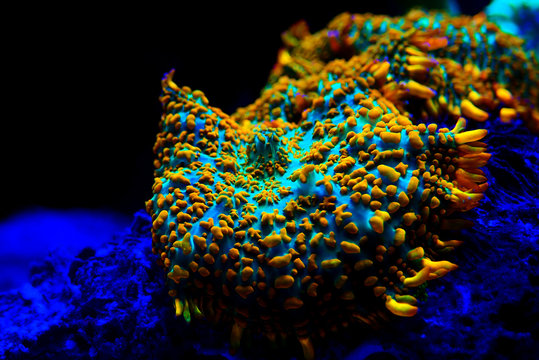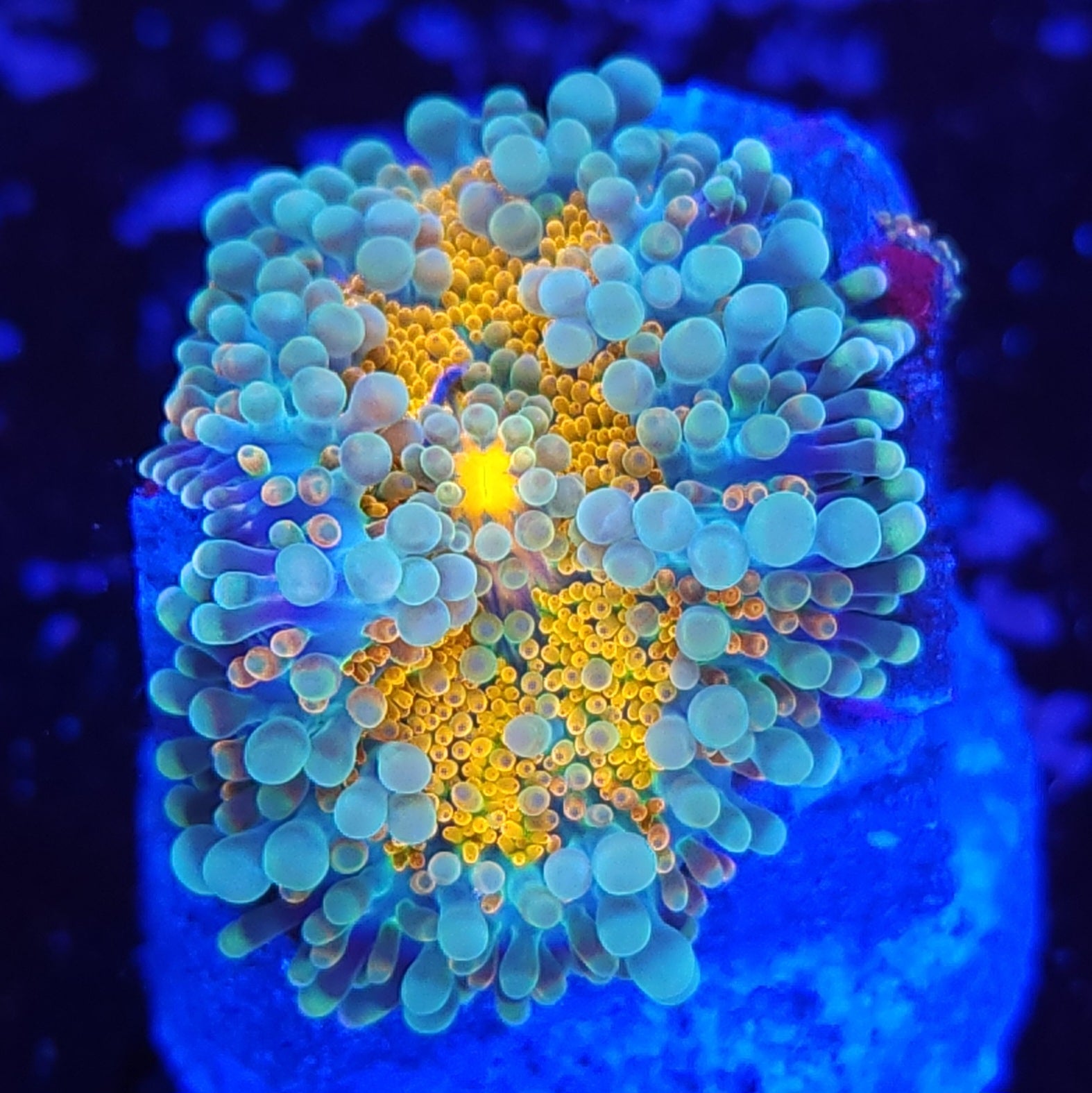
𝐔𝐧𝐝𝐞𝐫𝐬𝐭𝐚𝐧𝐝𝐢𝐧𝐠 𝐃𝐢𝐟𝐟𝐞𝐫𝐞𝐧𝐭 𝐓𝐲𝐩𝐞𝐬 𝐨𝐟 𝐂𝐨𝐫𝐚𝐥𝐬:
𝐀 𝐂𝐨𝐦𝐩𝐫𝐞𝐡𝐞𝐧𝐬𝐢𝐯𝐞 𝐎𝐯𝐞𝐫𝐯𝐢𝐞𝐰
Introduction
I know what it is like wanting to start in corals and feeling overwhelmed! There are so many kinds and requirements and this is just the beginning. I hope this guide helps you identify some corals that you would like to get or expand your collection with.
Soft Corals: The Easygoing Crowd
What Are Soft Corals?
Soft corals are a favorite among reef enthusiasts, particularly beginners, for their hardy nature and adaptability. Unlike their stony counterparts, soft corals lack a rigid calcium carbonate skeleton and instead have flexible, fleshy bodies supported by a protein matrix and tiny skeletal elements called sclerites. Their ease of care, combined with their stunning variety of forms and colors, makes them a versatile choice for any reef tank.
Identification of Soft Corals
Appearance:
- Soft corals come in an array of forms, including branching, encrusting, leafy, and finger-like structures. Their textures range from smooth to leathery, and they often sway gracefully in water currents.
Support Structure:
- Instead of a hard skeleton, they are supported by sclerites, giving them their characteristic flexibility. Basically they are completely squishy.
Movement:
- Many soft corals exhibit dynamic motion, with some species like Xenia pulsing rhythmically.
Popular Soft Coral Species
Here’s a closer look at 8 of the most popular soft corals, ranging from beginner-friendly to intermediate species:
1. Leathers (Sarcophyton, Sinularia, Lobophytum)
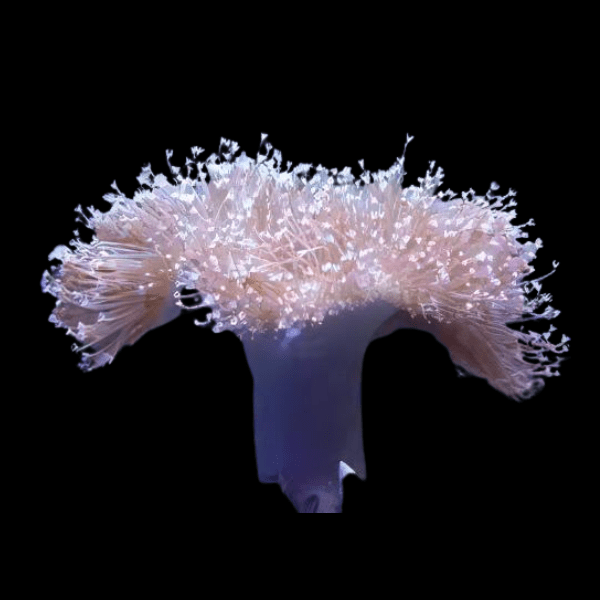


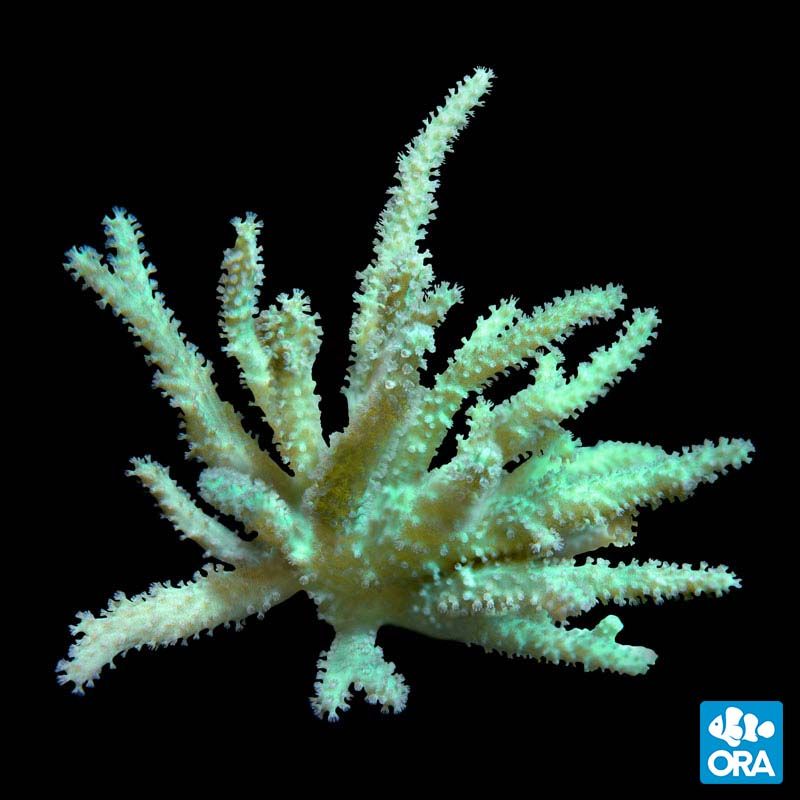
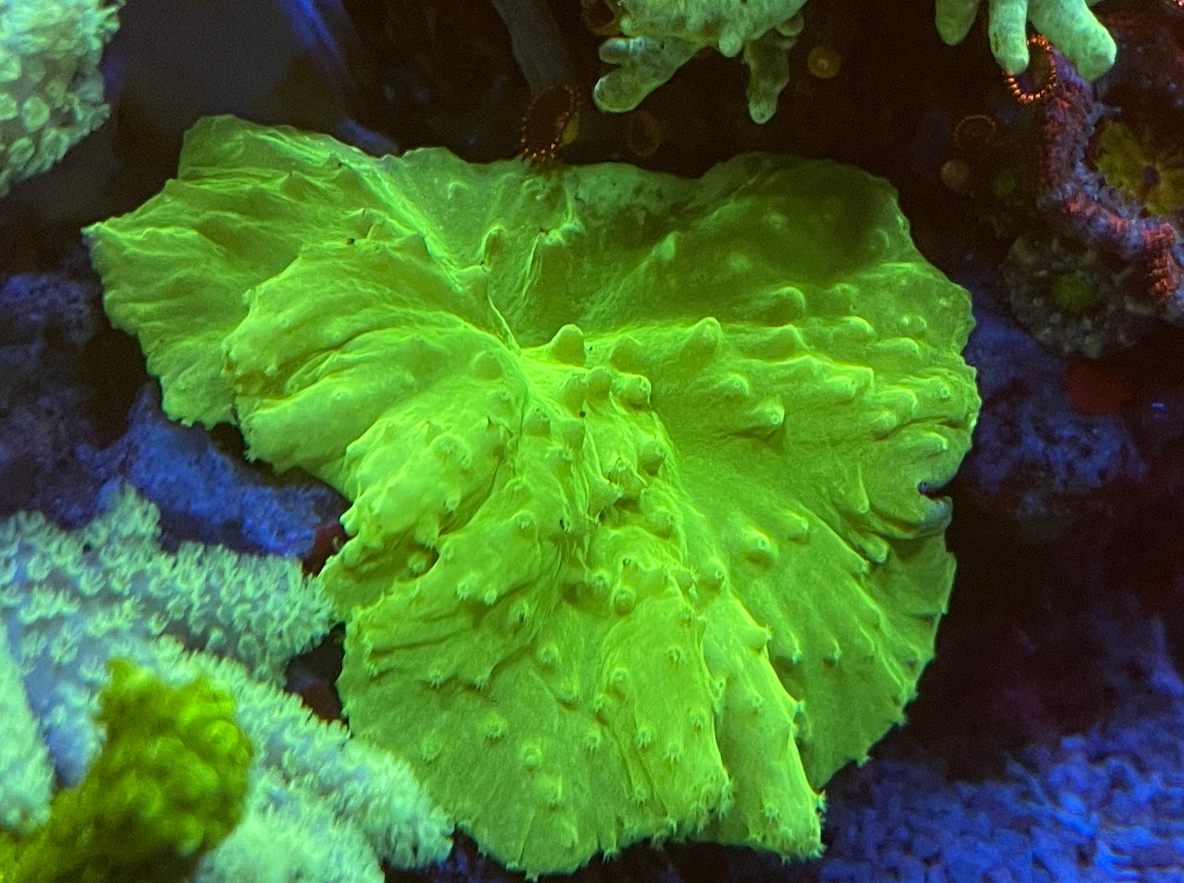
- Description: Large, leathery corals with a sturdy appearance. Toadstool and Finger Leathers are common types.
- Care Level: Beginner-friendly.
- Highlights: Resilient and capable of thriving in various tank conditions.
2. Mushrooms (Discosoma, Rhodactis, Ricordea)
- Description: Flat, disc-shaped corals available in a rainbow of colors and patterns.
- Care Level: Extremely hardy and beginner-friendly.
- Highlights: Thrive in low light and flow; excellent for filling in gaps in aquascaping.
3. Zoanthids (Zoanthus, Palythoa)
Photo Credit Reef Chasers, AlgaeBarn, Top Shelf Aquatics
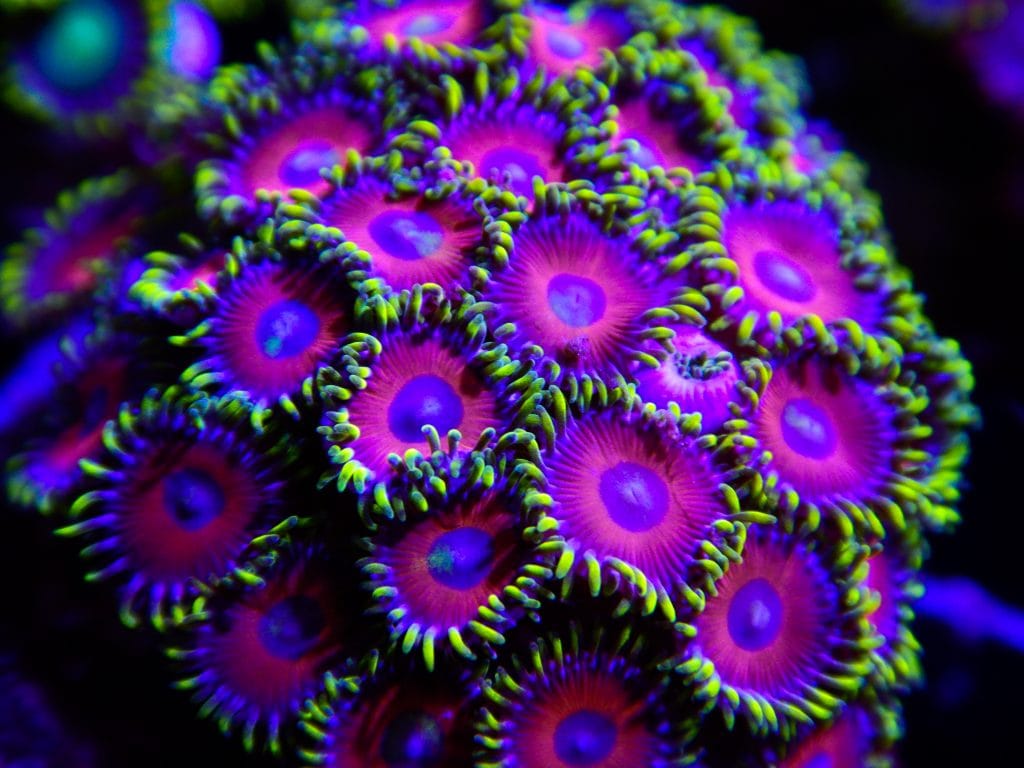



- Description: Brightly colored colonial polyps that spread across rock surfaces.
- Care Level: Beginner-friendly, though they require stable water conditions.
- Highlights: Known for their dazzling color varieties, including the sought-after “Rainbow Zoas.”
4. Kenya Tree Coral (Capnella)
Photo Credit: Tidal Gardens, Reeffishcenter Wholesale

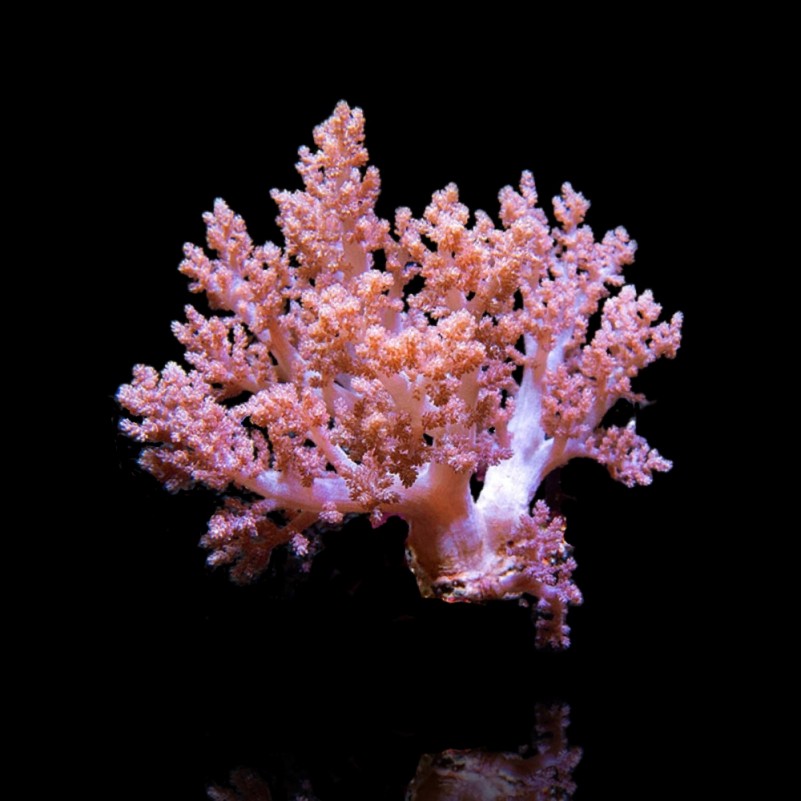
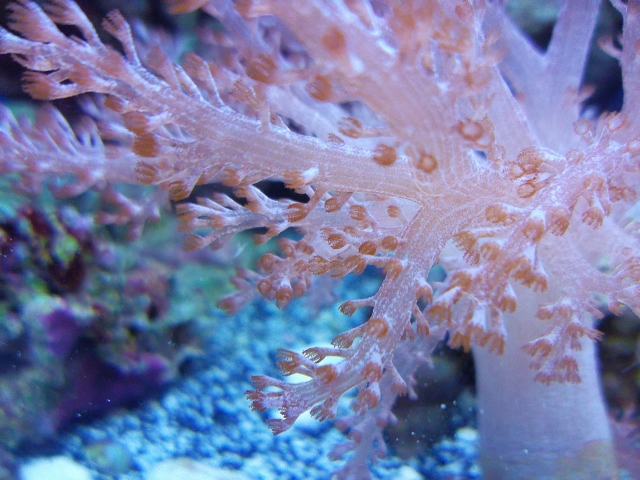
- Description: A fast-growing, branching coral that resembles a small tree.
- Care Level: Beginner-friendly.
- Highlights: Forgiving and resilient; can grow prolifically in favorable conditions.
Tamara's Pro Tips: These are a great beginner coral and they are super easy to take care of. If you just want a super easy coral tank with low demand, this might be a good option. However, they reproduce quickly and if you want to progress to other types of corals, you might want to skip this one.
5. Xenia (Pulsing Xenia)
Photo Credit: Top Shelf, Tidal Gardens, WWC



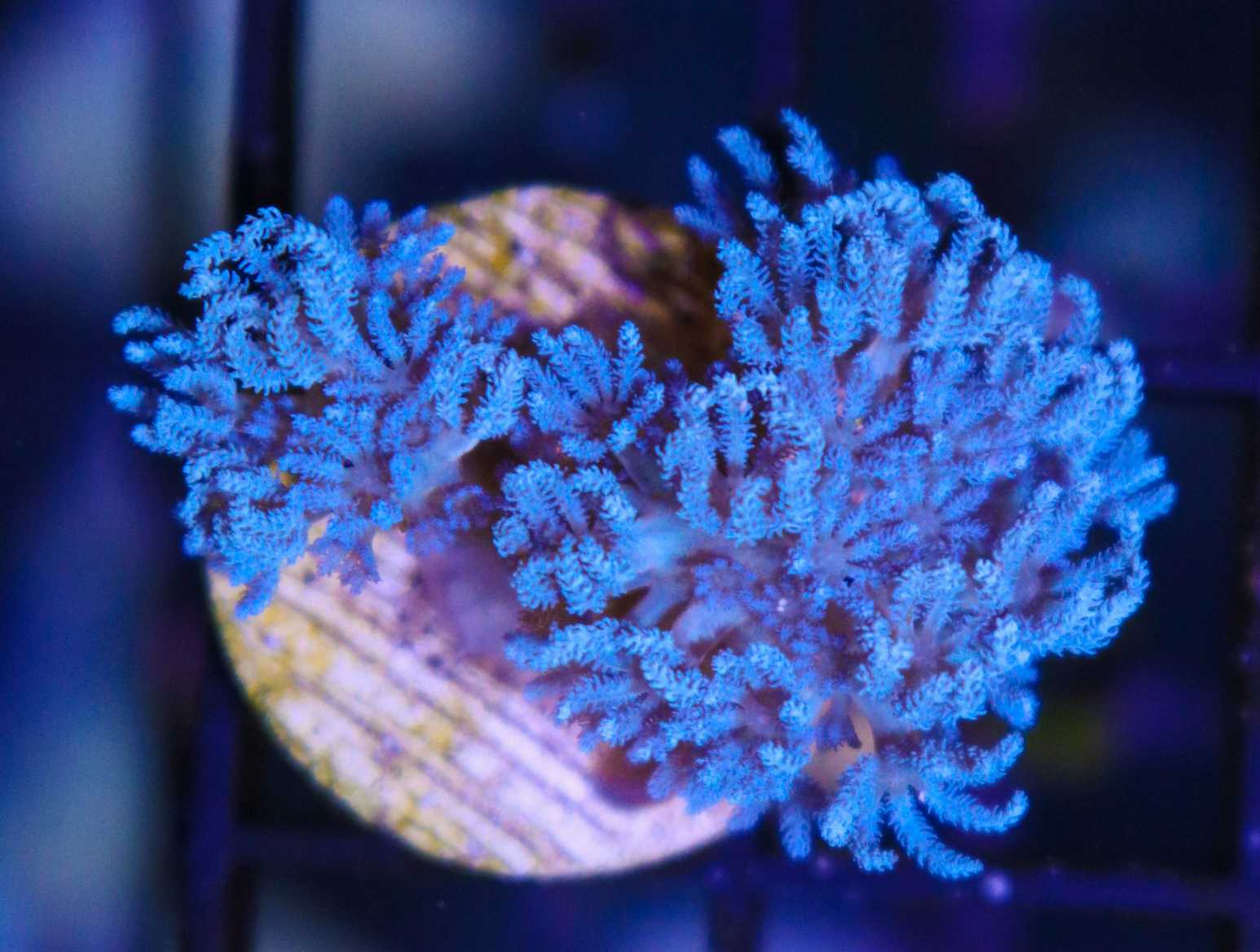
- Description: Corals with rhythmic, pulsing polyps that look like small flowers in motion.
- Care Level: Beginner-friendly, though they can spread aggressively.
- Highlights: Fascinating to watch; excellent for adding movement.
6. Clove Polyps (Clavularia)
Photo Credit: Top Shelf Aquatics, Royal Reef, Extreme Corals, Tidal Gadrens


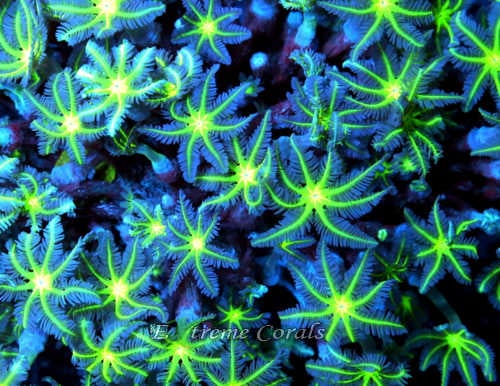
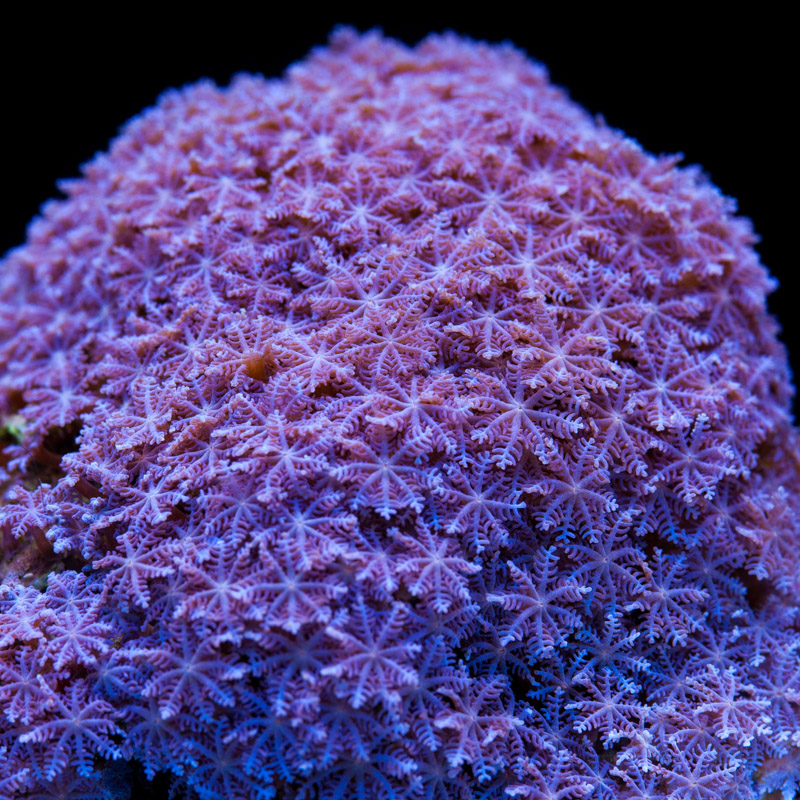
- Description: Colonial polyps with small, flower-like appearances.
- Care Level: Beginner-friendly.
- Highlights: Easy to care for and visually striking.
7. Green Star Polyps (Pachyclavularia)
Photo Credit: WWC


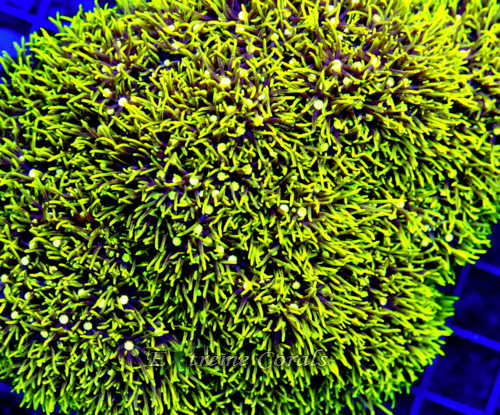
- Description: Neon green polyps that form encrusting mats.
- Care Level: Beginner-friendly.
- Highlights: Hardy and fast-growing, making them ideal for covering rocks.
8. Nephthea
Photo Credit: Tidal Gardens, Reef Builders, Whityyn Aquatics


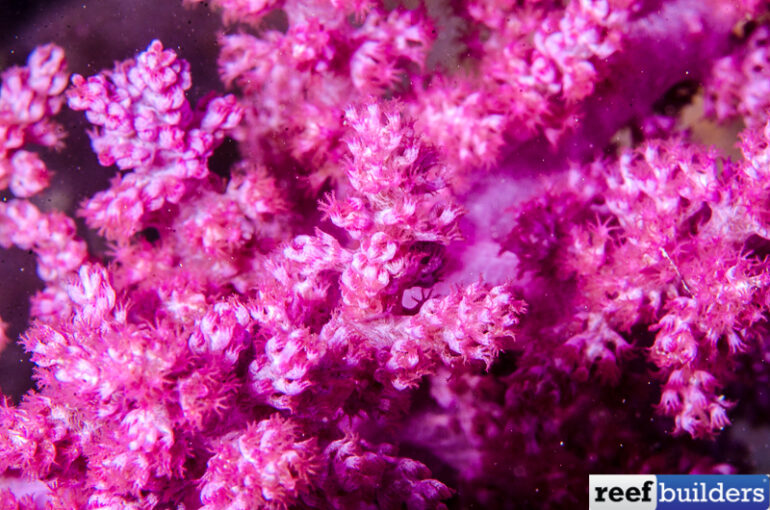
- Description: Wavy, cabbage-like coral with vibrant colors.
- Care Level: Beginner to intermediate.
- Highlights: A unique aesthetic addition to reef aquascapes.
Best Soft Corals for Beginners
1. Mushrooms (Discosoma, Rhodactis, Ricordea)
- Why They’re Beginner-Friendly: Mushrooms are nearly indestructible, thriving in a wide range of tank conditions, including low light and low flow. They grow quickly and are available in vibrant colors and textures, making them both forgiving and rewarding for beginners.
2. Green Star Polyps (Pachyclavularia)
- Why They’re Beginner-Friendly: Green Star Polyps (GSP) are hardy, fast-growing, and easy to propagate. They tolerate fluctuating water parameters and moderate flow, making them ideal for new reef keepers. Their bright neon green color adds an instant pop to any tank.
3. Leathers (Sarcophyton, Sinularia, Lobophytum)
- Why They’re Beginner-Friendly: Leathers are resilient and adaptable to various lighting and flow conditions. They’re tolerant of minor parameter fluctuations and grow rapidly, making them a low-maintenance yet visually impactful choice for new reef hobbyists.
Care Requirements for Soft Corals
Soft corals are forgiving and adaptable, but providing optimal conditions ensures their best growth and appearance:
Lighting:
- Moderate; leathers and mushrooms tolerate low light, while zoanthids and gorgonians prefer moderate to high light.
Flow:
- Moderate to low; excessive flow can damage their tissues.
Feeding:
- Mostly photosynthetic but benefit from occasional target feeding with phytoplankton or reef snow.
Chemistry:
- Stable parameters are ideal, though they can tolerate minor fluctuations:
- Temperature: 75–80°F.
- Salinity: 1.024–1.026.
- Alkalinity: 7–12 dKH.
Tamara’s Pro Tip: Soft corals are like the bread and butter of reefing—they’re simple, satisfying, and always a crowd-pleaser. Whether you’re a beginner or an advanced aquarist looking to add some movement and color, you’ll never go wrong with these flexible beauties.
LPS Corals: The Show-Stoppers
What Are LPS Corals?
LPS (Large Polyp Stony) corals are some of the most eye-catching additions to a reef tank. Their large, fleshy polyps sit atop a rigid calcium carbonate skeleton, creating a dramatic and colorful display. LPS corals are beloved for their bold presence and movement, but they do require more attention to stable water conditions compared to soft corals. While they’re not as finicky as SPS corals, they thrive best under consistent care.
Identification of LPS Corals
Appearance:
- LPS (Large Polyp Stony) corals are known for their large, fleshy polyps that extend from a calcium carbonate skeleton. These polyps come in a variety of vibrant colors and textures, often creating a striking visual centerpiece in reef tanks. They can range from bubbly (e.g., Frogspawn) to hammer-shaped (e.g., Hammer Coral) or even circular and candy-like (e.g., Candy Cane Coral).
Support Structure:
- LPS corals are supported by a hard stony base, which provides structural integrity. The fleshy polyps extend from this skeleton, giving them a unique combination of firmness and softness. The contrast between their rigid base and flowing tissue makes them visually dynamic.
Movement:
- While their stony skeleton remains fixed, the fleshy polyps of LPS corals sway gently with the water flow. This movement adds a captivating, lifelike quality to the tank, making them favorites for creating dynamic displays.
Popular Types of LPS Corals
Here’s a deeper dive into some of the most popular LPS corals, ranging from beginner-friendly to intermediate:
1. Torch Coral (Euphyllia glabrescens)
Photo Credit: Extreme Corals, Tidal Gardens
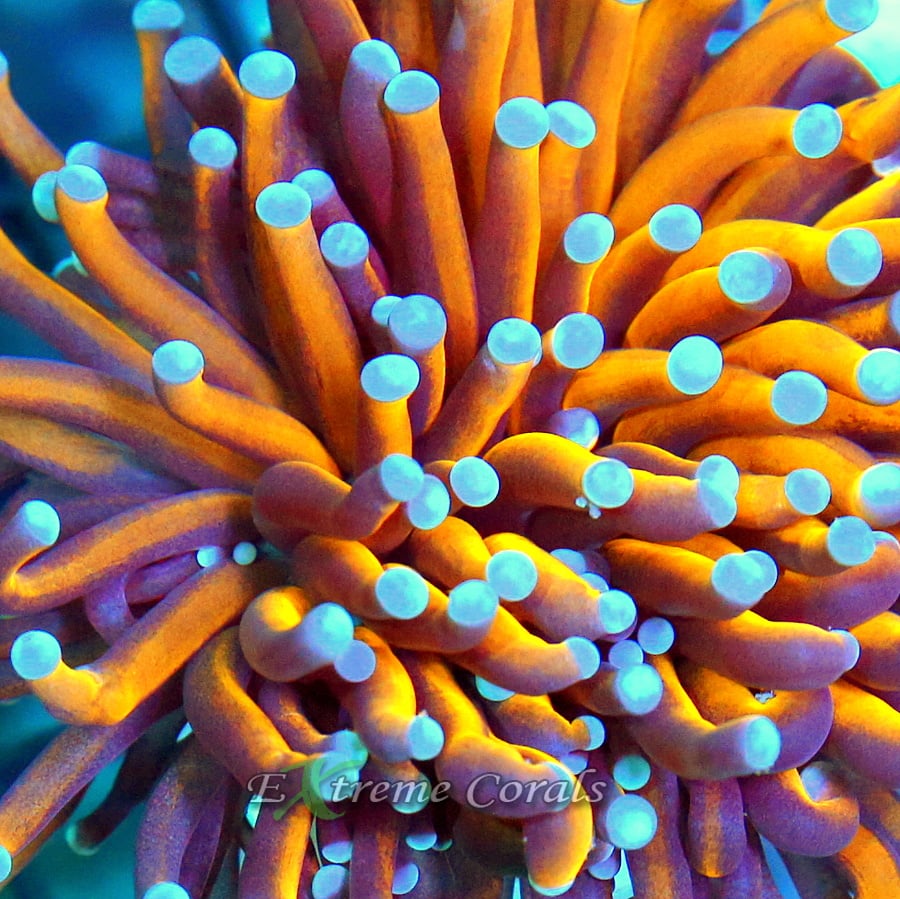

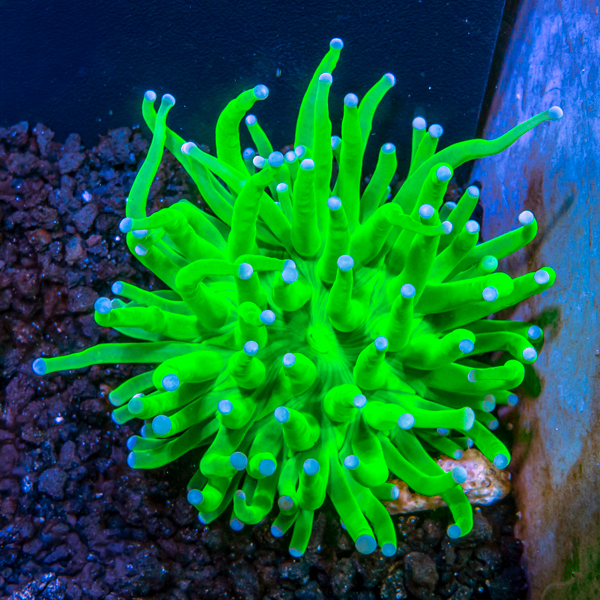
-
Description: Known for its long, flowing tentacles that sway beautifully in the current. Torch corals are a show-stopping centerpiece but can be aggressive toward nearby tankmates.
-
Care Level: Intermediate.
Tamara's Pro Tips: Give them ample space—their tentacles pack a powerful sting.
2. Hammer Coral (Euphyllia ancora)
Photo Credit: Reef Chasers, Vivid Aquariums

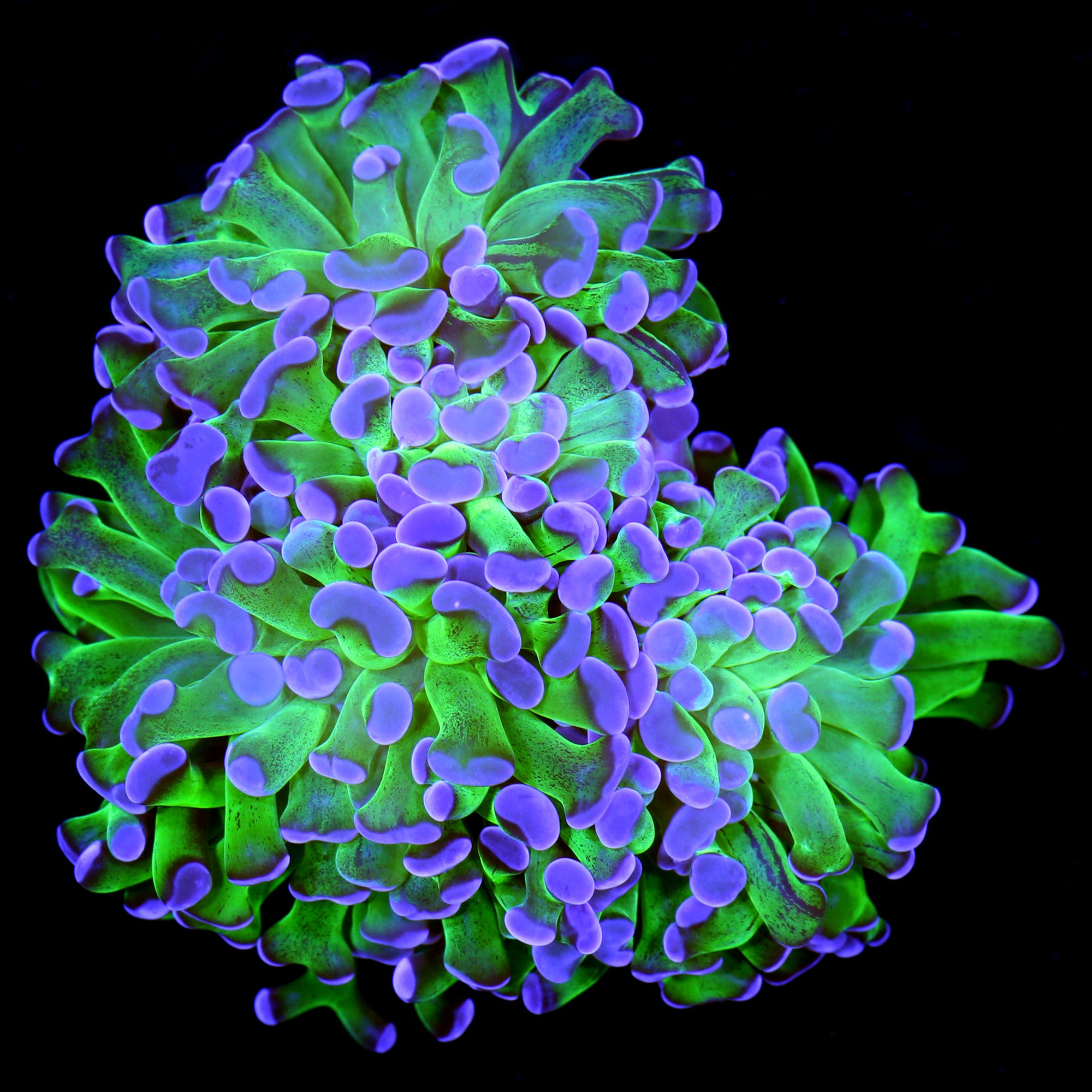
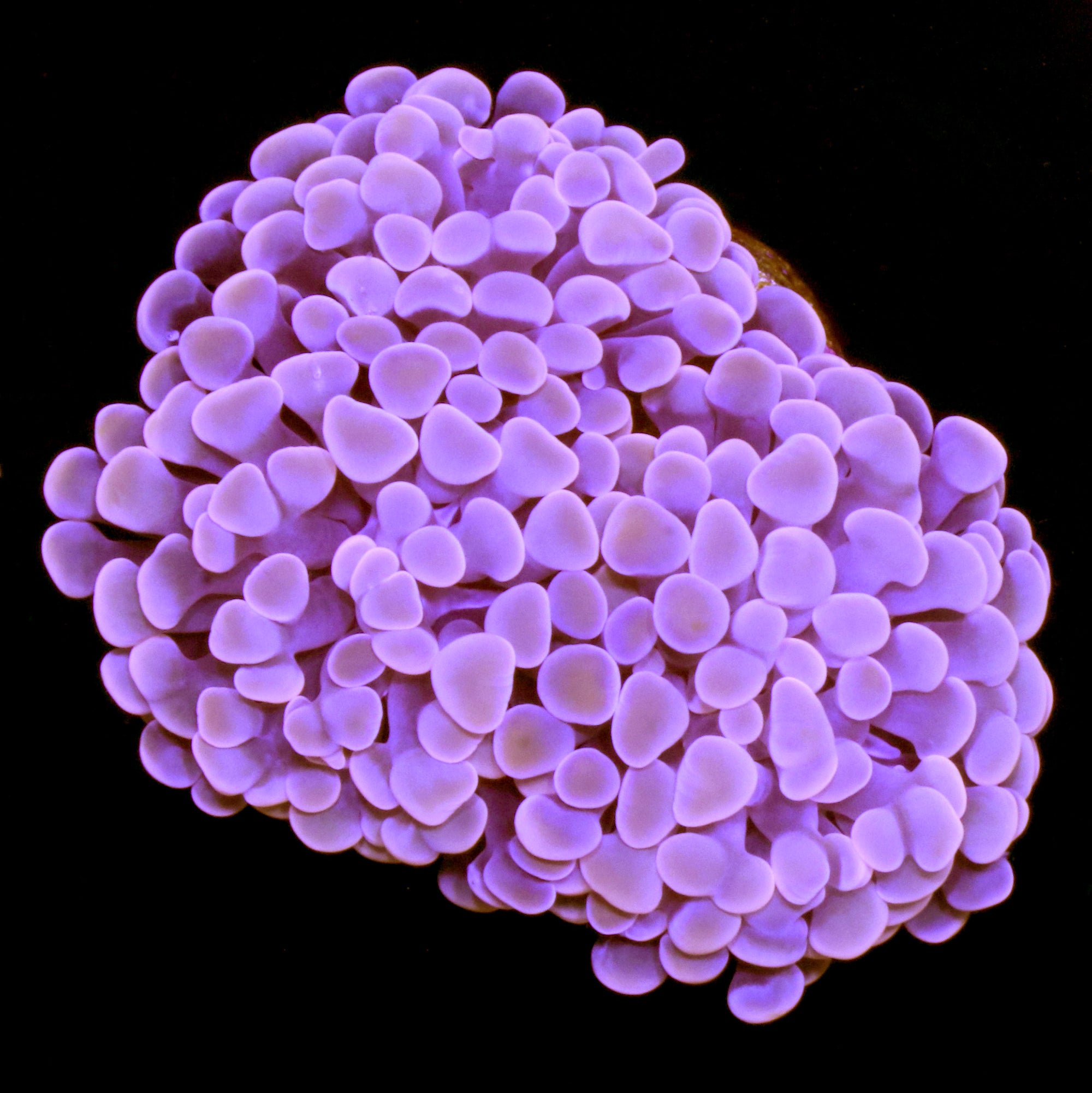
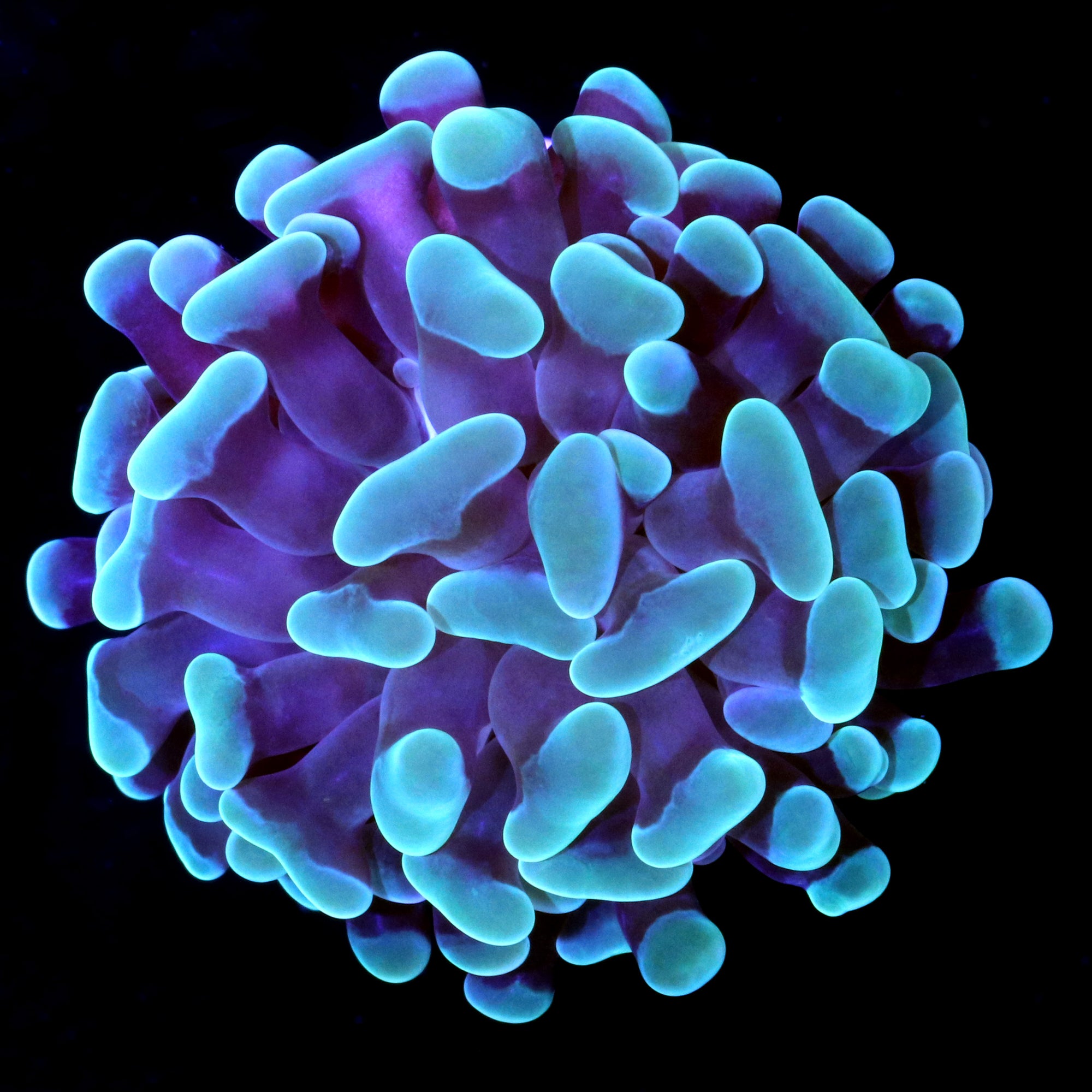
-
Description: Recognized by its hammer- or anchor-shaped tips, this coral is both striking and hardy.
-
Care Level: Beginner-friendly.
Tamara's Pro Tips: Group with other Euphyllia species, as they won’t sting each other. Plus they will look Oh So Pretty waving at you!
3. Frogspawn Coral (Euphyllia divisa)


-
Description: A bubbly variation of the Euphyllia family, with a slightly more compact appearance than torch or hammer corals.
-
Care Level: Intermediate.
Tamara's Pro Tips: Its bubbly tentacles make it a great focal point, but keep it away from sensitive corals.
4. Duncan Coral (Duncanopsammia axifuga)
Photo Credit: Vivid Aquariums, Tidal Gardens, Reef Builder
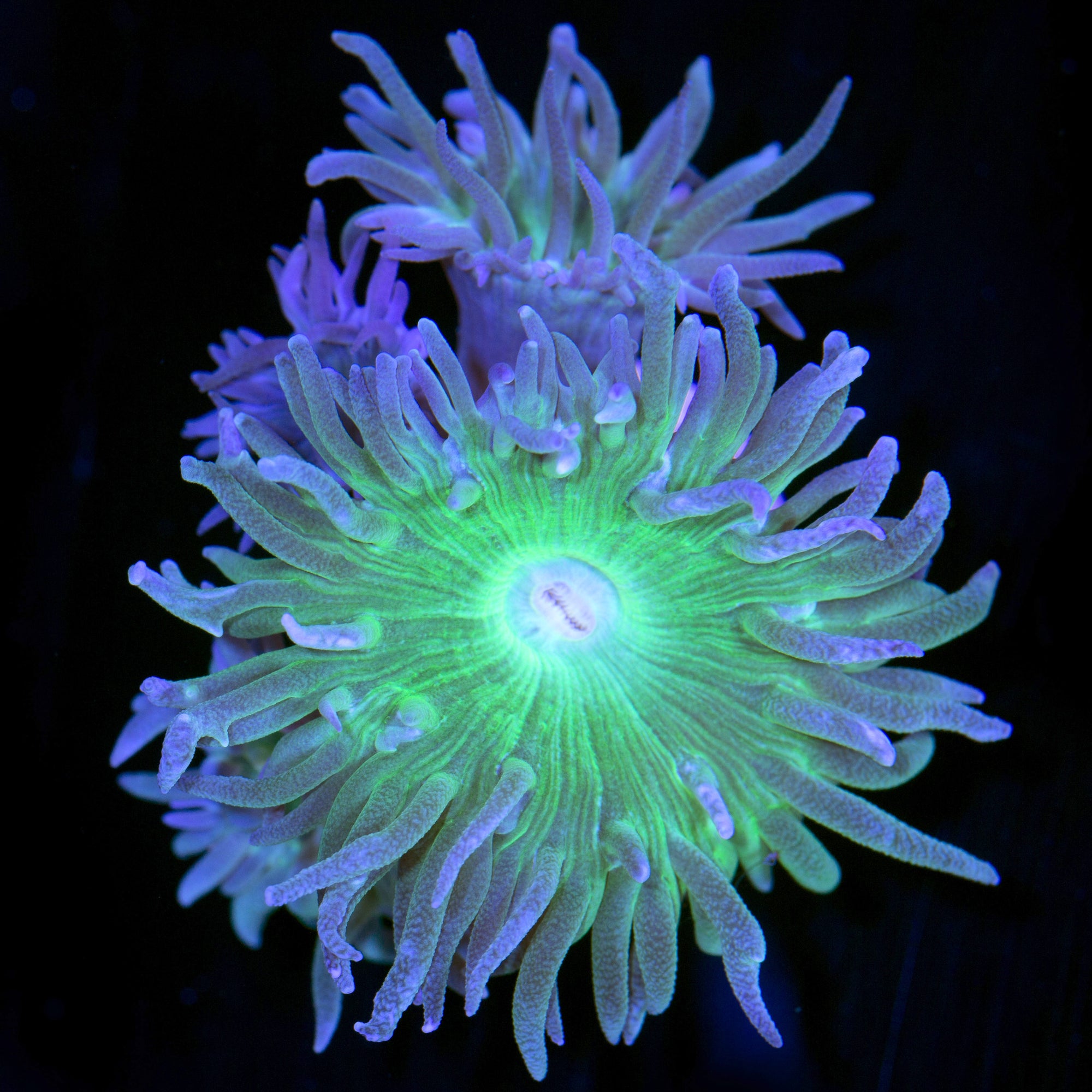

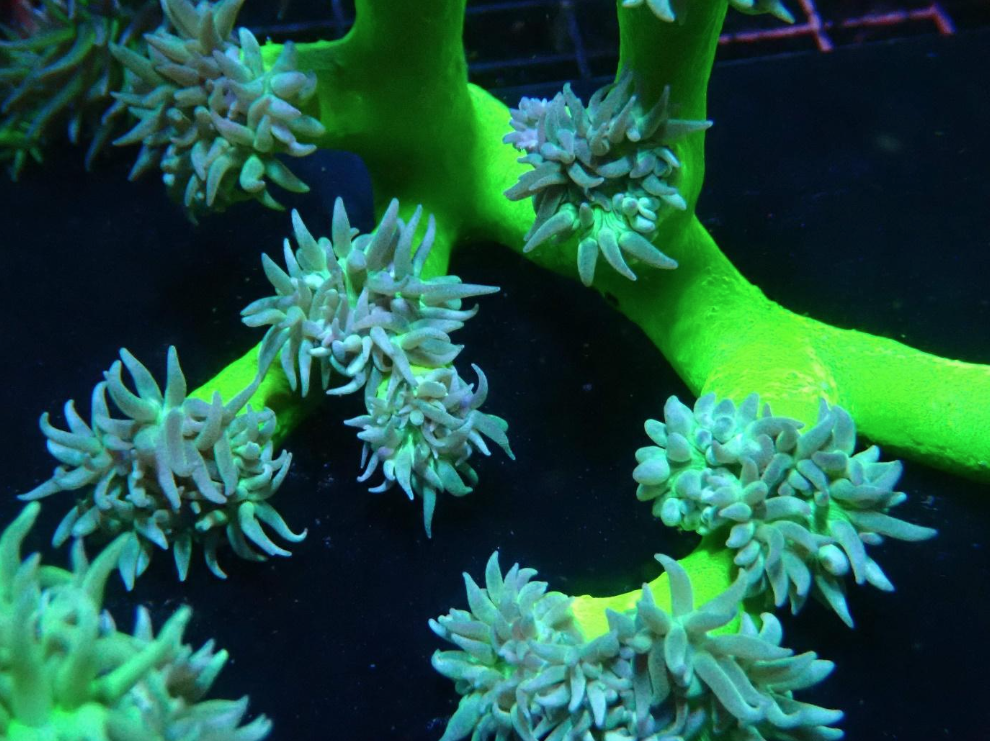
-
Description: A beginner-friendly LPS with long, tubular polyps and vibrant green centers.
-
Care Level: Beginner-friendly.
Tamara's Pro Tips: Duncans love to be fed and will reward you with rapid growth when given regular meals.
5. Candy Cane Coral (Caulastrea)
Photo Credit: LiveAquaria, Reef Builders,
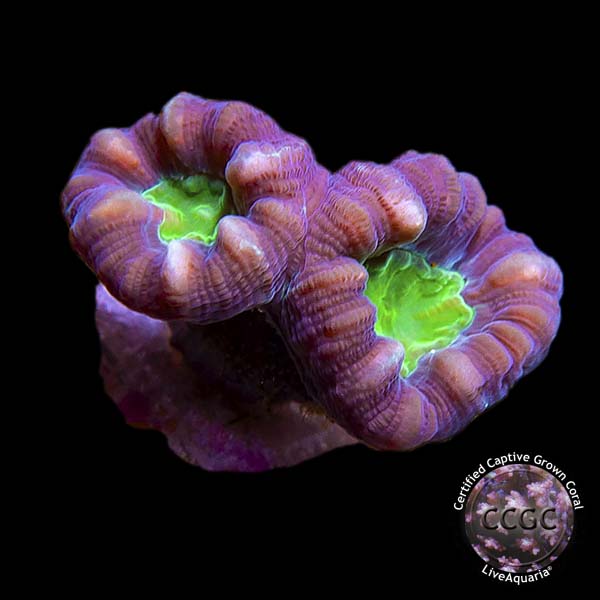
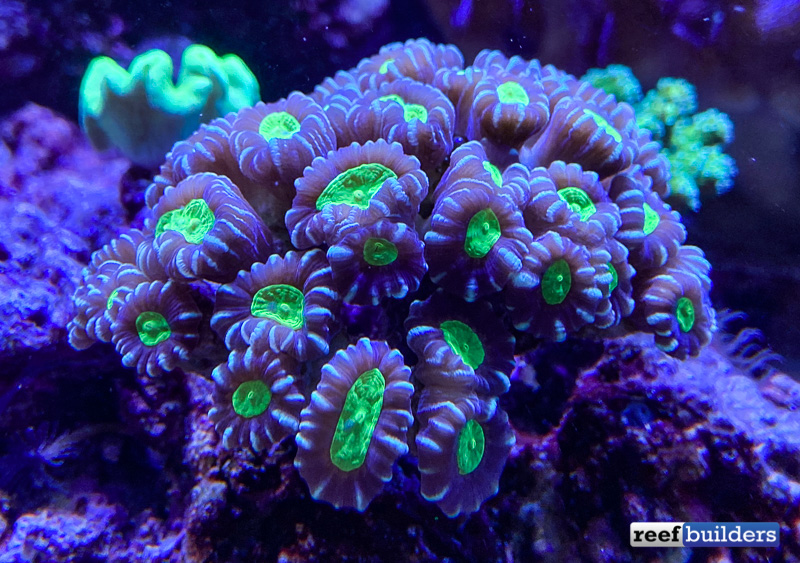
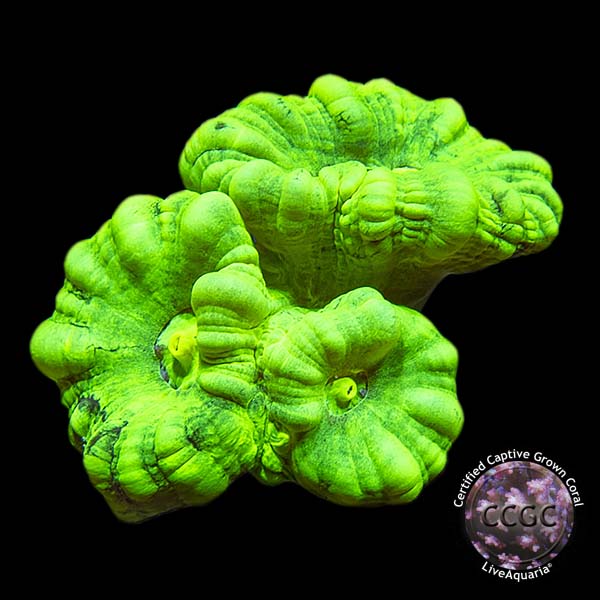
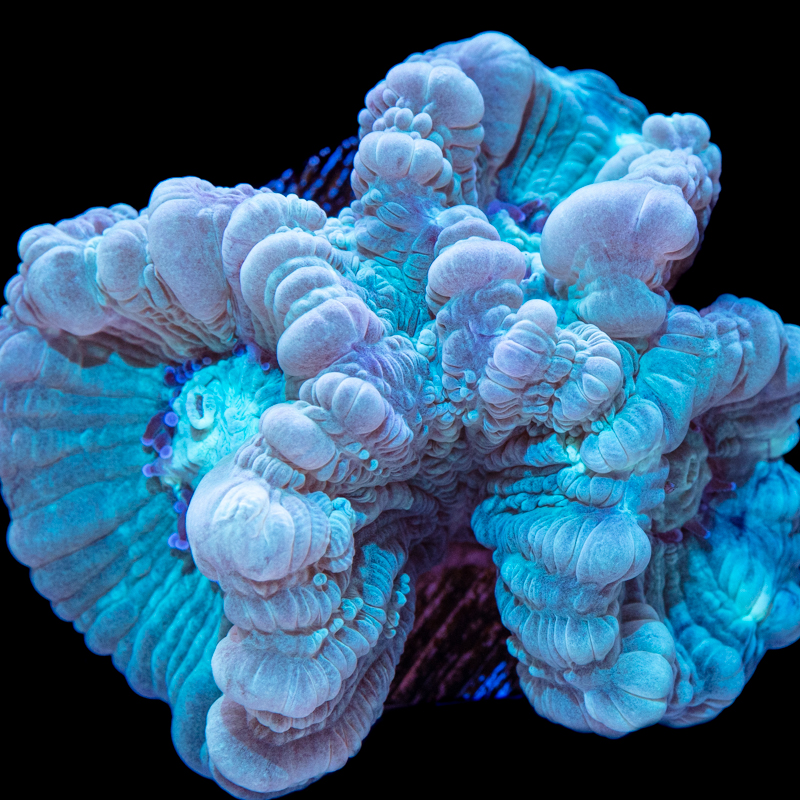
-
Description: Hardy and colorful, this coral features circular heads in neon green, yellow, or purple hues.
-
Care Level: Beginner-friendly.
6. Acan Coral
Photo Credit: Top Shelf Aquatics



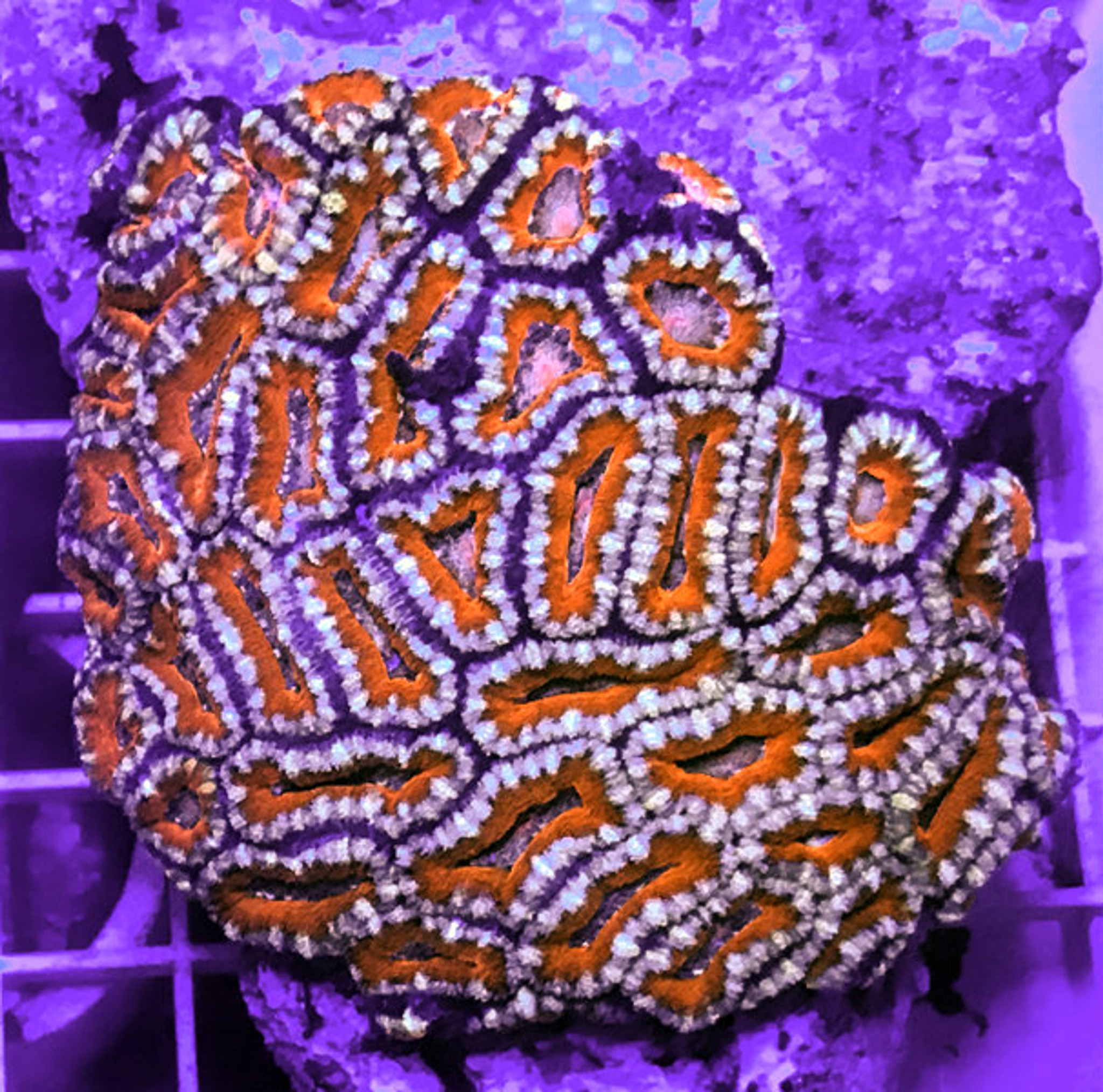
-
Description: A fleshy, vibrant coral available in a kaleidoscope of colors and patterns.
-
Care Level: Intermediate.
- Note: There has been A LOT of reclassification of this group from acans, to micromussa so I am just calling them acans here as I am old school and I am sure I would get called out for trying to specify every since sub category. Also, Acans are like zoas, they seem to come in every color of the rainbow. 🌈
- Acanthastrea lordhowensis: Reclassified from Acanthastrea to Micromussa in 2016
- Acanthastrea bowerbanki: Reclassified from Acanthastrea to Homophyllia
- Acanthastrea pachysepta: Reclassified from Lobophyllia to Acanthastrea
- Acanthastrea faviaformis: Reclassified from Acanthastrea to Dipsastraea
Tamara's Pro Tips: Place in lower light areas to bring out their best colors and feed regularly to encourage growth.
7. Elegance Coral (Catalaphyllia jardinei)
Photo Credit: Top Shelf Aquatics, Ocean Store

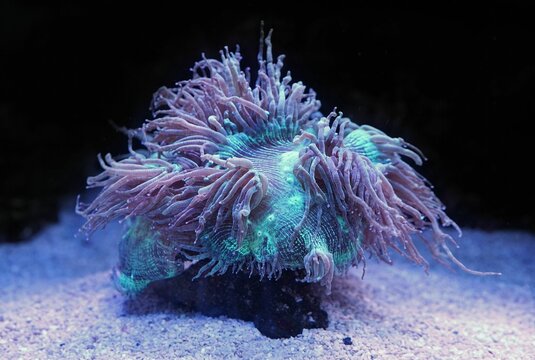

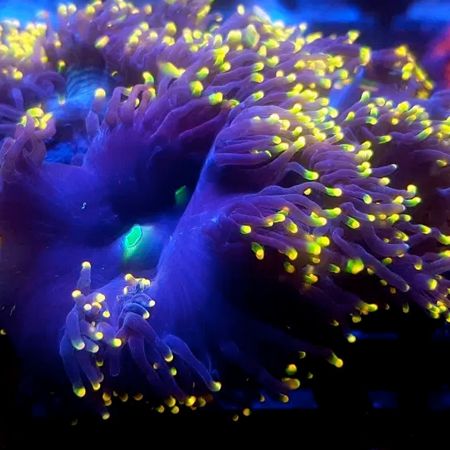
-
Description: A stunning, large-polyped coral with flowing, colorful tentacles.
-
Care Level: Intermediate to advanced.
Tamara's Pro Tips: Requires gentle flow to prevent its delicate tentacles from tearing.
8. Bubble Coral (Plerogyra sinuosa)
Photo Credit: AlgaeBarn, Live Aquaria, The Biota Group
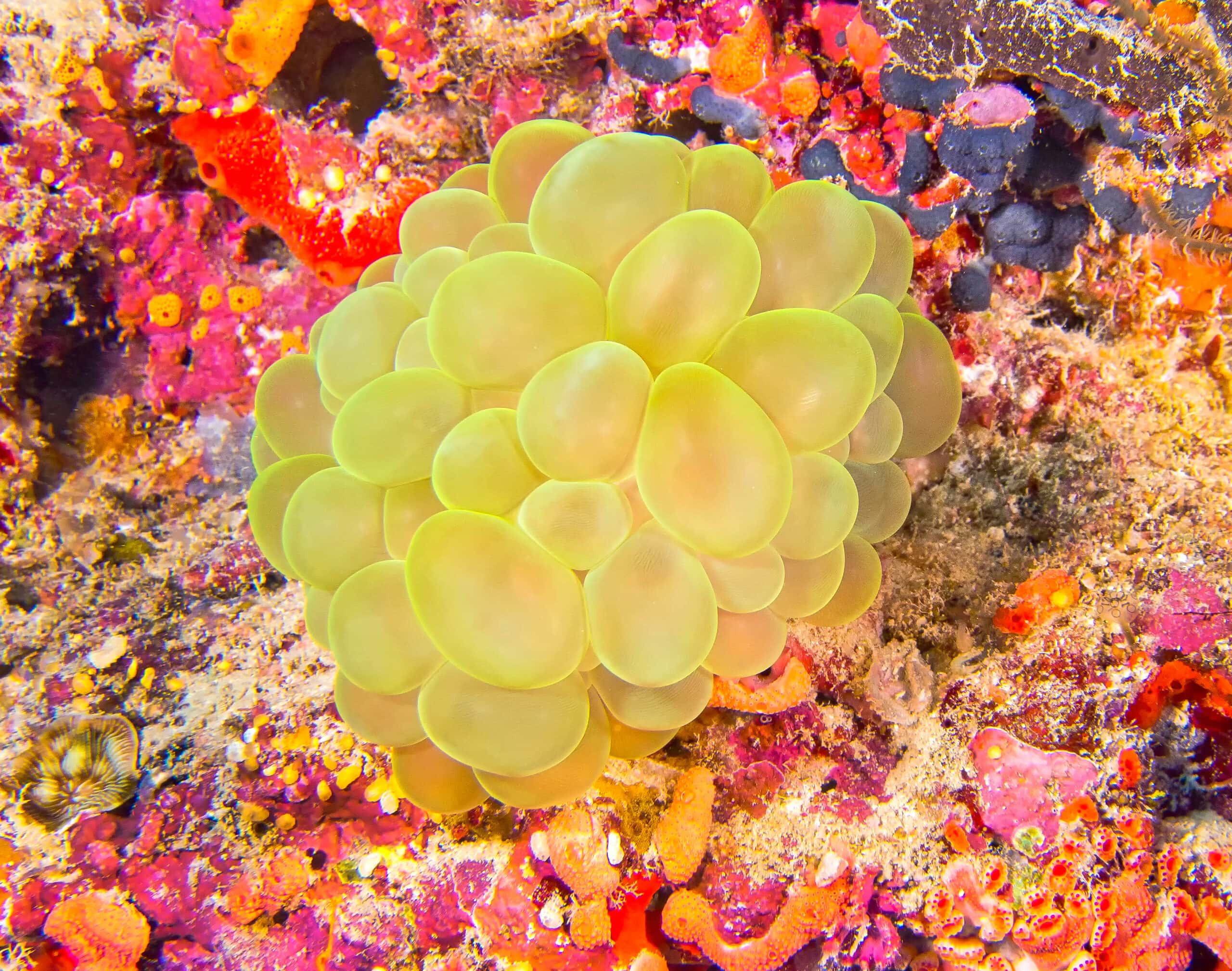
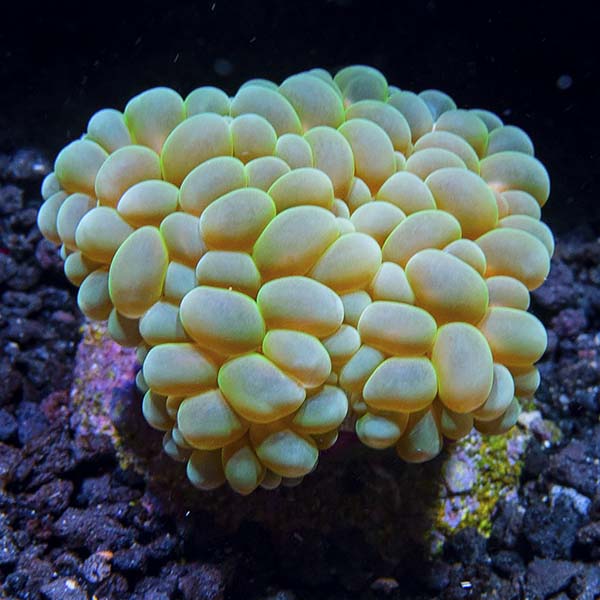

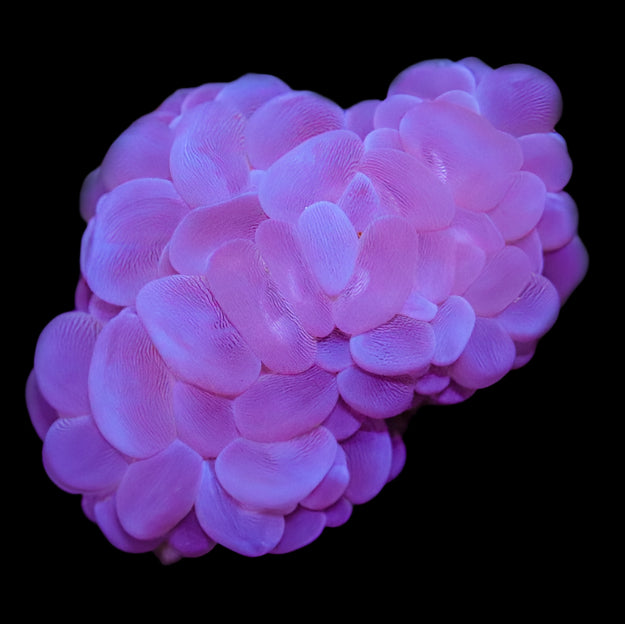
-
-
Description: Features large, bubble-like vesicles that expand and contract with light and flow.
-
Care Level: Intermediate.
-
Tamara's Pro Tips: Keep in low-flow areas to protect its delicate bubbles from tearing.
Best for Beginners
Candy Cane Coral (Caulastrea spp.)
- Why It’s Beginner-Friendly: Hardy and adaptable, Candy Cane corals tolerate a range of lighting and flow conditions. Their neon colors add instant visual appeal without requiring demanding care. They grow in manageable clusters, making them easy to maintain and propagate.
Duncan Coral (Duncanopsammia axifuga)
- Why It’s Beginner-Friendly: Duncans are forgiving of minor water parameter fluctuations and thrive with moderate lighting and flow. Their tubular polyps are quick to extend, making it easy to tell if they’re happy or need adjustment. Plus, regular feeding promotes rapid growth, making them rewarding for beginners.
Frogspawn Coral (Euphyllia divisa)
- Why It’s Beginner-Friendly: Frogspawn corals are visually stunning with their bubbly polyps and are relatively resilient under stable tank conditions. They can handle moderate flow and lighting while offering the dynamic movement that many beginners love in their first reef tank.
Care Requirements
LPS corals are generally more forgiving than SPS corals but require stable conditions to thrive. Here are the key care parameters:
1. Lighting:
-
-
Moderate to high, depending on the species.
-
Most Euphyllia (torch, hammer, frogspawn) corals thrive under moderate light, while Acans prefer slightly lower light levels.
-
Use adjustable LED lighting to cater to their specific needs and prevent bleaching.
-
2. Flow:
-
-
Moderate; aim for a gentle sway to prevent damage to their fleshy polyps.
-
Avoid direct, high-intensity flow that can tear or irritate their tissues.
-
3. Feeding:
-
-
Benefit greatly from regular feedings of meaty foods like mysis shrimp, reef roids, or coral pellets.
-
Target feeding ensures nutrients reach their polyps directly and reduces waste in the tank.
-
4. Chemistry:
-
-
Alkalinity: 8–12 dKH to support skeleton growth.
-
Calcium: 400–450 ppm to maintain their stony skeletons.
-
Magnesium: 1200–1350 ppm to stabilize calcium and alkalinity levels.
-
Nutrients: Low to moderate nitrates (5–10 ppm) and phosphates (<0.03 ppm) are ideal.
-
SPS Corals: The Divas of the Reef
What Are SPS Corals?
SPS (Small Polyp Stony) corals are the ultimate test of skill for reef hobbyists. Known for their rigid calcium carbonate skeletons and tiny polyps, they are the perfectionists of the reefing world. SPS corals demand pristine water conditions, intense lighting, and strong, dynamic flow. In return for your dedication, they reward you with breathtakingly intricate structures and vibrant colors that make them the crown jewels of any reef tank.
Identification of SPS Corals
Appearance:
- SPS (Small Polyp Stony) corals are characterized by their intricate, rigid calcium carbonate skeletons adorned with tiny polyps. These corals exhibit a range of growth forms, including branching (e.g., Acropora), plating (e.g., Montipora), and compact bushy shapes (e.g., Stylophora). They are less colorful than LPS but often feature striking pastel shades and vivid hues under proper lighting.
Support Structure:
- The defining feature of SPS corals is their hard, brittle skeleton, which provides all their structural support. Their small polyps are embedded within the skeleton and extend only slightly, giving them a distinct, tightly packed appearance.
Movement:
- Unlike soft or LPS corals, SPS corals exhibit almost no movement. Their small polyps may retract or extend slightly, but the overall structure is rigid and unmoving. Their beauty lies in their intricate architecture and ability to grow into dramatic shapes over time.
Popular Types of SPS Corals
SPS corals come in a variety of forms, from delicate branching types to plating and encrusting varieties. Here are some of the most popular:
1. Acropora (Acropora spp.)
Photo Credit: Vivid Aquariums, WWC
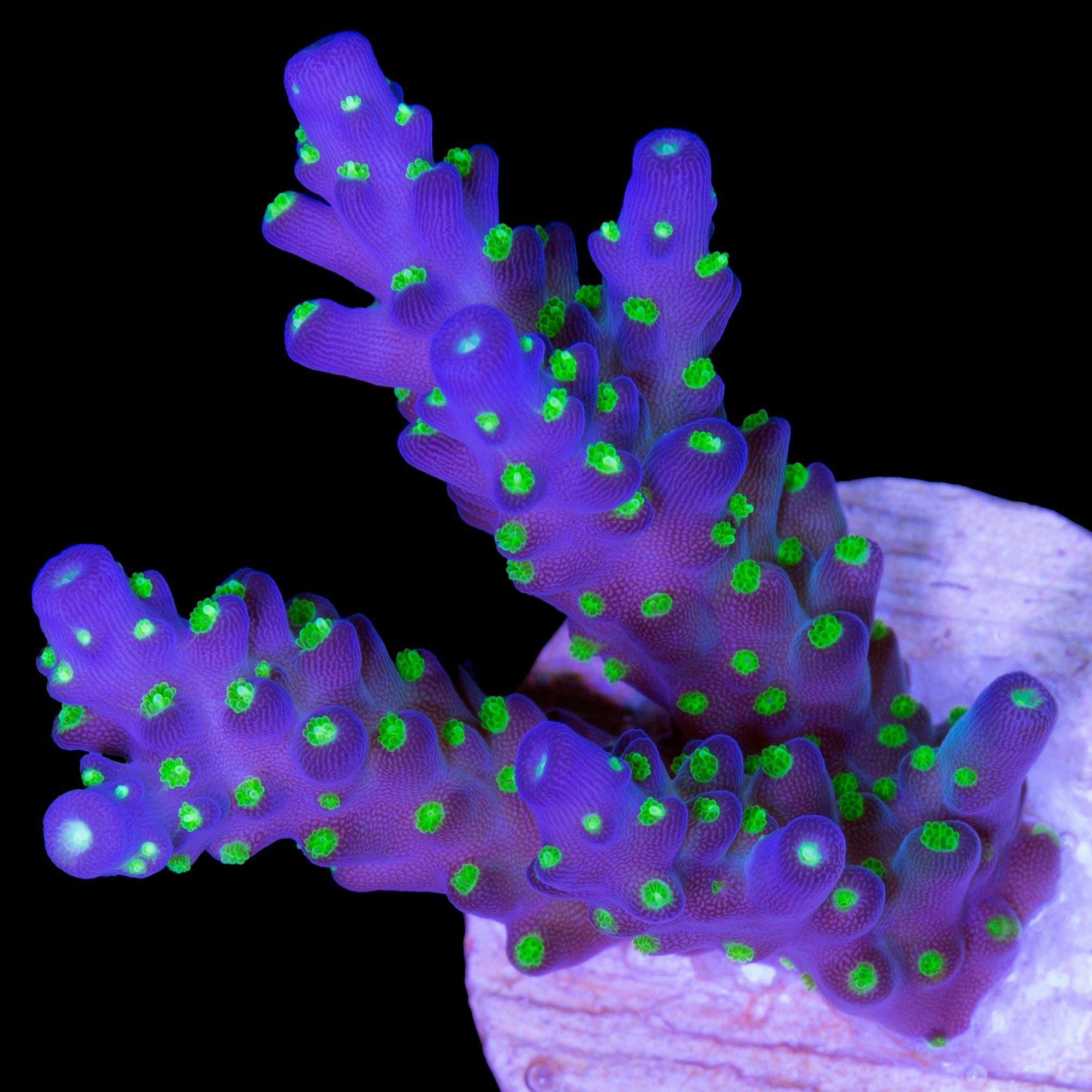

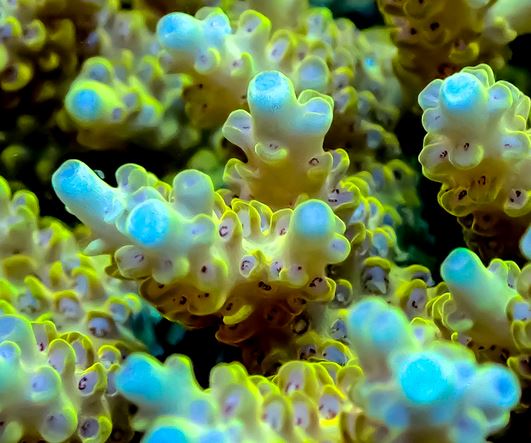

-
Description: The gold standard for advanced reefers, Acropora corals feature intricate branching structures and vibrant hues like blue, green, and pink.
-
Care Level: Advanced.
-
Highlights: Rapid growers under perfect conditions but unforgiving of parameter swings.
2. Montipora (Montipora digitata, Montipora capricornis)
Photo Credit: Extreme Corals, Top Shelf Aquatics, Tidal Gardens
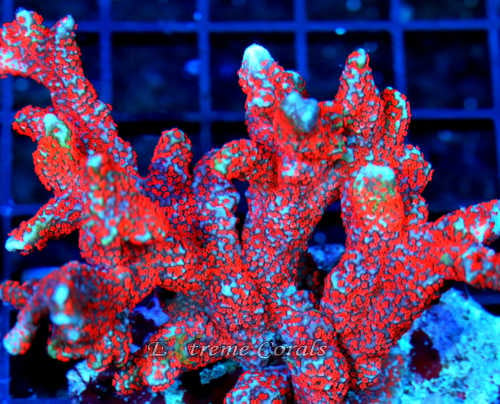



-
Description: Available in diverse forms such as plating, encrusting, or branching, Montipora corals are slightly easier than Acropora.
-
Care Level: Beginner to intermediate.
-
Highlights: Great for beginners dipping their toes into SPS care.
3. Bird’s Nest Coral (Seriatopora)
Photo Credit: Vivid Aquariums, Top Shelf Aquatics
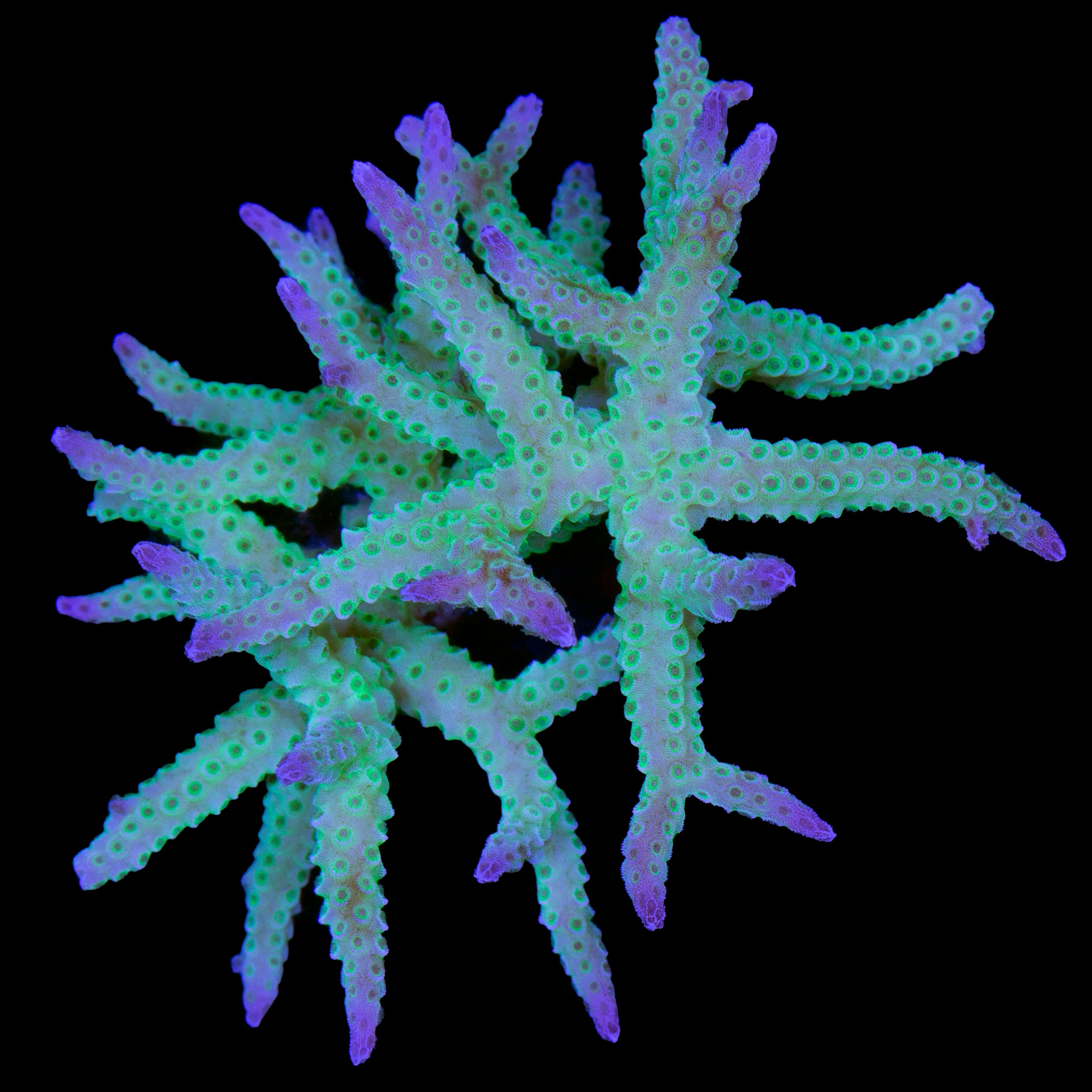


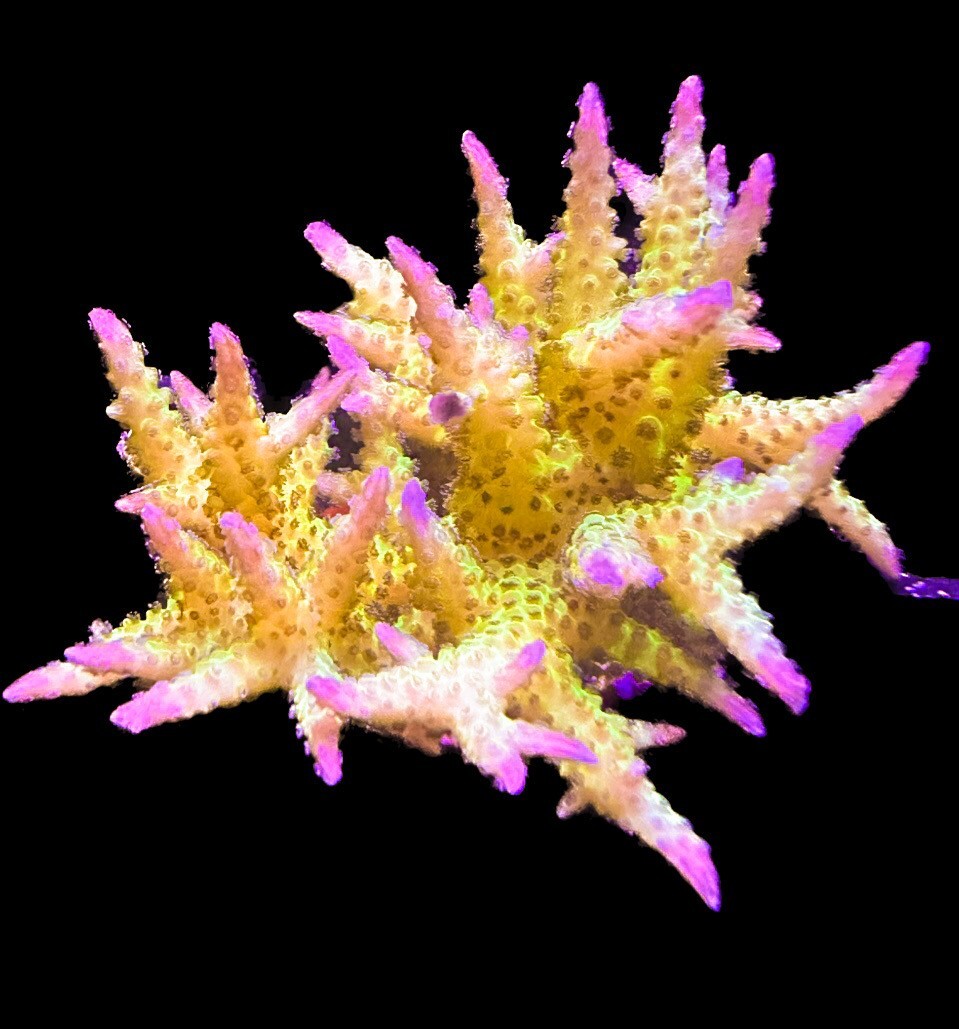
-
Description: A compact, branching coral with thin, delicate branches and vibrant colors like pink or green.
-
Care Level: Beginner to intermediate.
-
Highlights: Hardy for an SPS and a fantastic starter coral.
4. Stylophora (Stylophora pistillata)
Photo Credit: Top Shelf Aquatics, WWC, Live Aquaria, Tidal Gardens

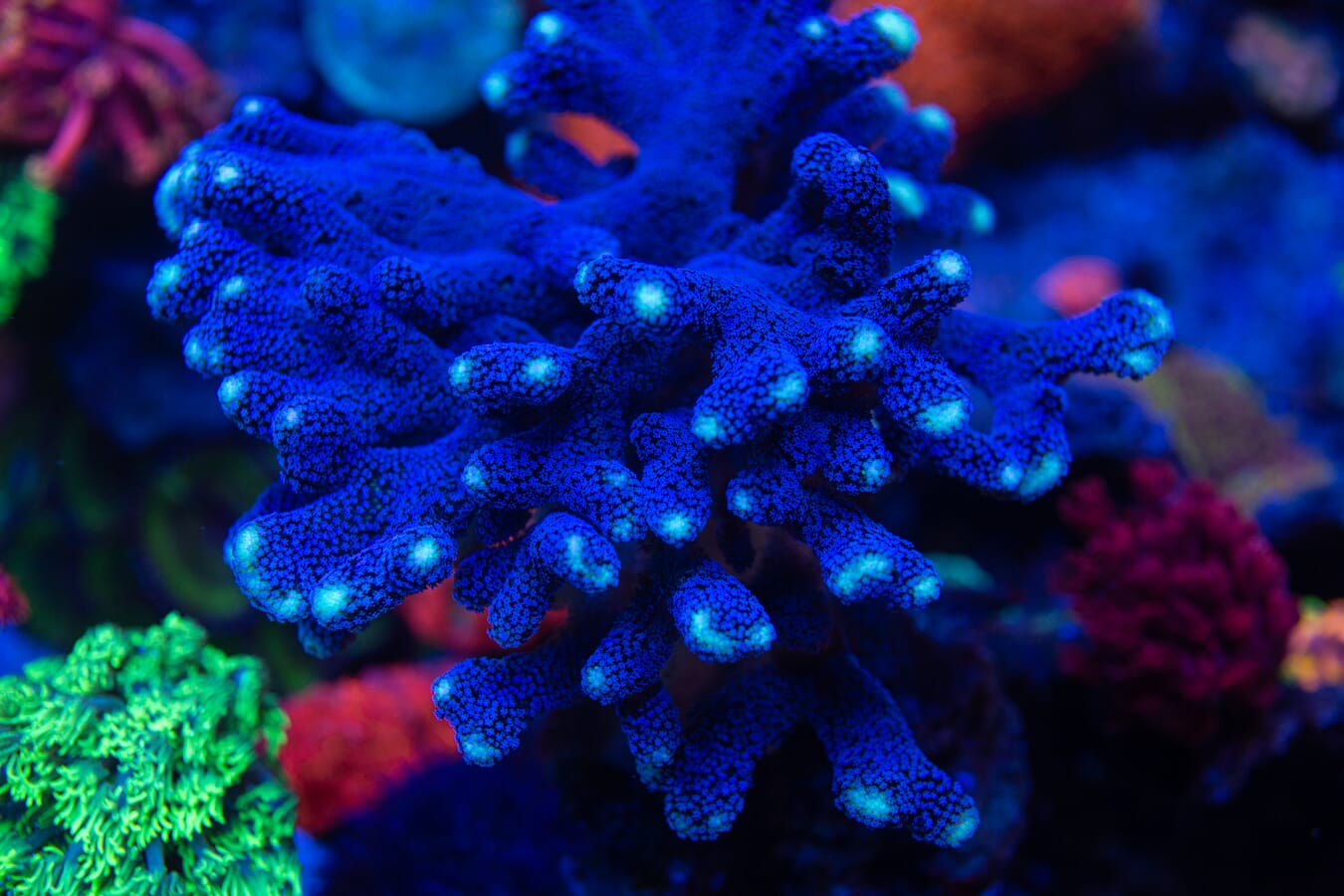
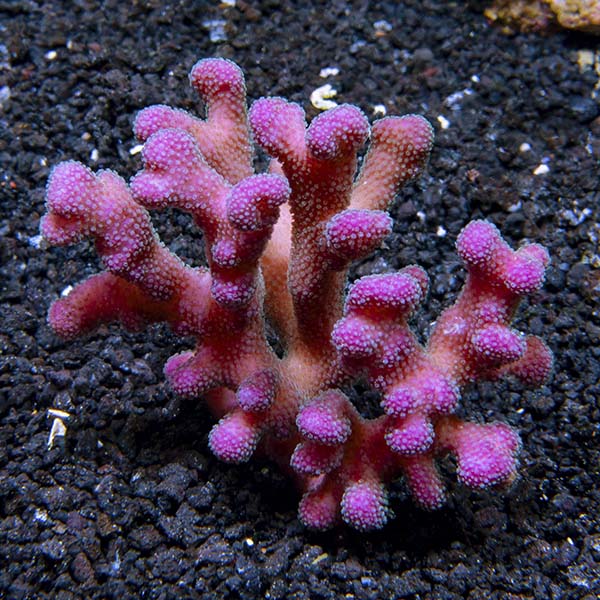

-
Description: Known for its bushy, compact growth pattern and vibrant hues, Stylophora is both attractive and hardy.
-
Care Level: Intermediate.
-
Highlights: Faster-growing and more forgiving than Acropora.
5. Pocillopora (Pocillopora damicornis)
Photo Credit: WWC, Tidal Gardens, Live Aquaria



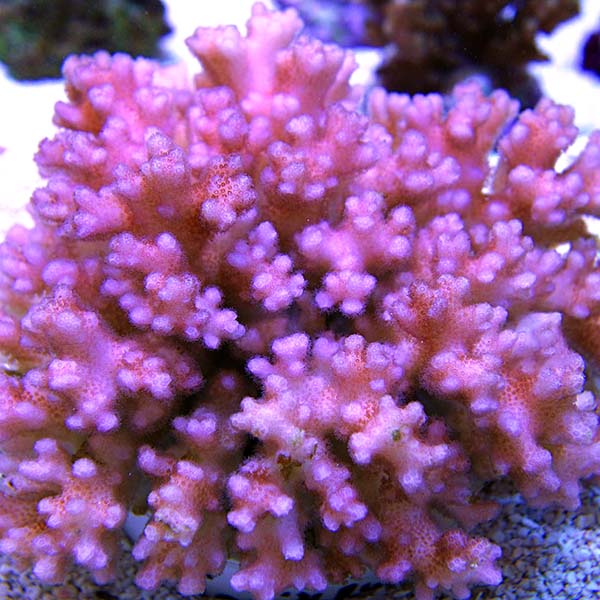
-
Description: A resilient SPS coral with a dense, rounded growth form. Available in pastel colors like pink, green, and cream.
-
Care Level: Beginner-friendly.
-
Highlights: Tolerant of slightly less-than-perfect conditions, making it ideal for newcomers to SPS care.
Tamara's Pro Tips: So when distinguishing between Seriatopora, Pocillopora, and Stylophora it is easiest to look at the skeleton.
I learned it like this:
Seriatopora is the most pointed

Pocillopora is less pointed

Stylopora is the least pointed
Best SPS Corals for Beginners
Montipora (Montipora capricornis, Montipora digitata)
- Why It’s Beginner-Friendly: Montipora corals are resilient compared to other SPS species, tolerating minor fluctuations in water chemistry better than their more sensitive counterparts. Montipora capricornis (plating) and Montipora digitata (branching) provide flexibility in aquascaping while being relatively forgiving. They adapt well to moderate to high lighting and strong flow, and their fast growth provides beginners with visible progress, making them both rewarding and manageable.
Bird’s Nest Coral (Seriatopora spp.)
- Why It’s Beginner-Friendly: Bird’s Nest Coral is a hardy SPS coral that offers tolerance for moderate parameter fluctuations, giving new hobbyists a chance to refine their skills. It adapts well to a variety of lighting and flow levels, and its intricate, rapidly growing branches create a stunning visual impact in the tank. This coral’s resilience and fast growth make it an excellent entry point into SPS care.
Pocillopora (Pocillopora damicornis)
- Why It’s Beginner-Friendly: Known for its adaptability and hardiness, Pocillopora thrives under conditions that might challenge other SPS corals. Its fast growth and attractive, rounded colonies in pastel colors like pink and green make it a favorite for beginners. Pocillopora also has a natural ability to propagate by dropping polyps, allowing it to spread and establish new colonies within the tank, adding to its dynamic appeal.
Care Requirements
SPS corals thrive on precision and consistency. Meeting their exacting care standards is crucial to their survival and growth.
1. Lighting:
-
-
Requires high-intensity lighting, typically achieved with LED, T5, or metal halide systems.
-
Consistent PAR levels between 250-400 are ideal, depending on the species.
-
Gradually acclimate SPS corals to intense lighting to prevent bleaching.
-
2. Flow:
-
-
High, alternating flow is essential to mimic natural reef conditions.
-
Strong currents help prevent detritus buildup and ensure proper nutrient delivery to the coral polyps.
-
Use wave makers or gyres to create a dynamic flow pattern.
-
3. Feeding:
-
-
Primarily photosynthetic, SPS corals rely on their symbiotic zooxanthellae for nutrition.
-
Supplement with amino acids, coral-specific foods, or plankton to enhance color and growth.
-
4. Chemistry:
-
-
Calcium: 420–450 ppm to support skeleton growth.
-
Alkalinity: 8–10 dKH for stable pH and proper calcification.
-
Magnesium: 1350–1400 ppm to balance calcium and alkalinity levels.
-
Nutrients: Low nitrates (1–5 ppm) and phosphates (<0.03 ppm) are critical to prevent algae growth while maintaining coral health.
-
Comparison Chart
| Feature | Soft Corals | LPS Corals | SPS Corals |
|---|---|---|---|
| Skeleton | None | Stony skeleton with fleshy polyps | Stony skeleton with small polyps |
| Movement | Sway in flow | Gentle extension | Rigid |
| Lighting | Moderate | Moderate to high | High |
| Flow | Moderate to low | Moderate | High |
| Feeding | Minimal, occasional | Benefit from regular meaty feedings | Minimal, supplemental amino acids |
| Best for Beginners | Mushrooms, Leathers, Zoanthids | Candy Cane, Duncan, Frogspawn | Montipora, Bird’s Nest, Pocillopora |
| Growth Rate | Fast | Moderate | Slow |
| Care Difficulty | Beginner-friendly | Intermediate | Advanced |
Conclusion
Soft corals, LPS, and SPS each offer unique challenges and rewards. For new reefers, soft corals are the best introduction, with their forgiving nature and fast growth. LPS corals provide a step up in care with their striking polyps and feeding requirements. SPS corals, the pinnacle of reefing expertise, are for those ready to dive into precision care.
Whether you’re starting with mushrooms or aiming for Acropora, there’s a coral for every level of hobbyist. Choose wisely, learn patiently, and enjoy building your underwater masterpiece.
Happy Reefing!

